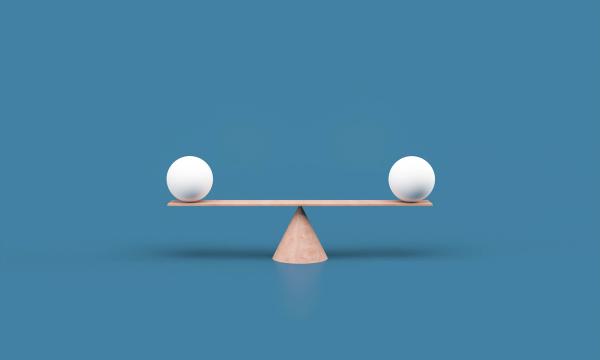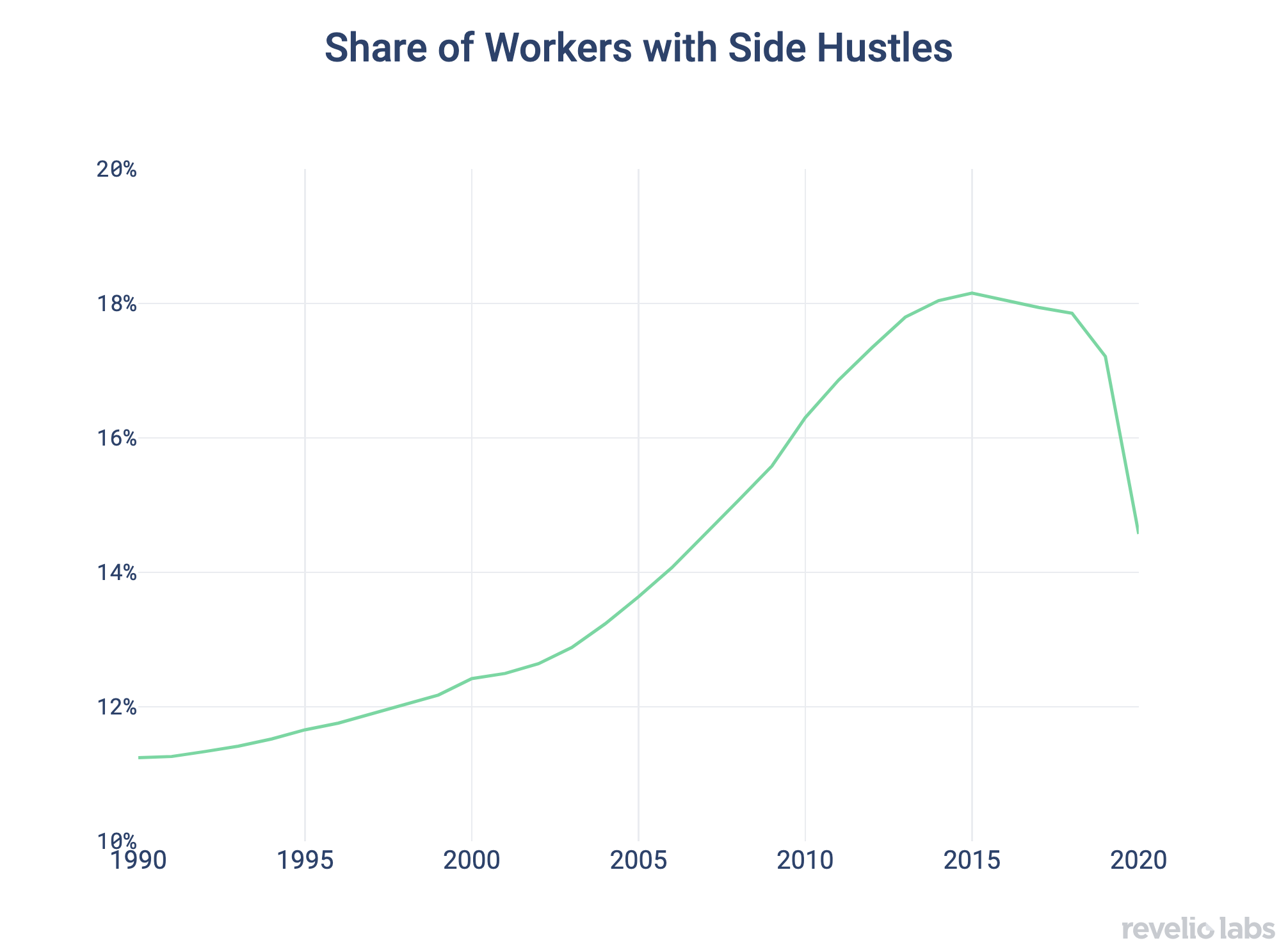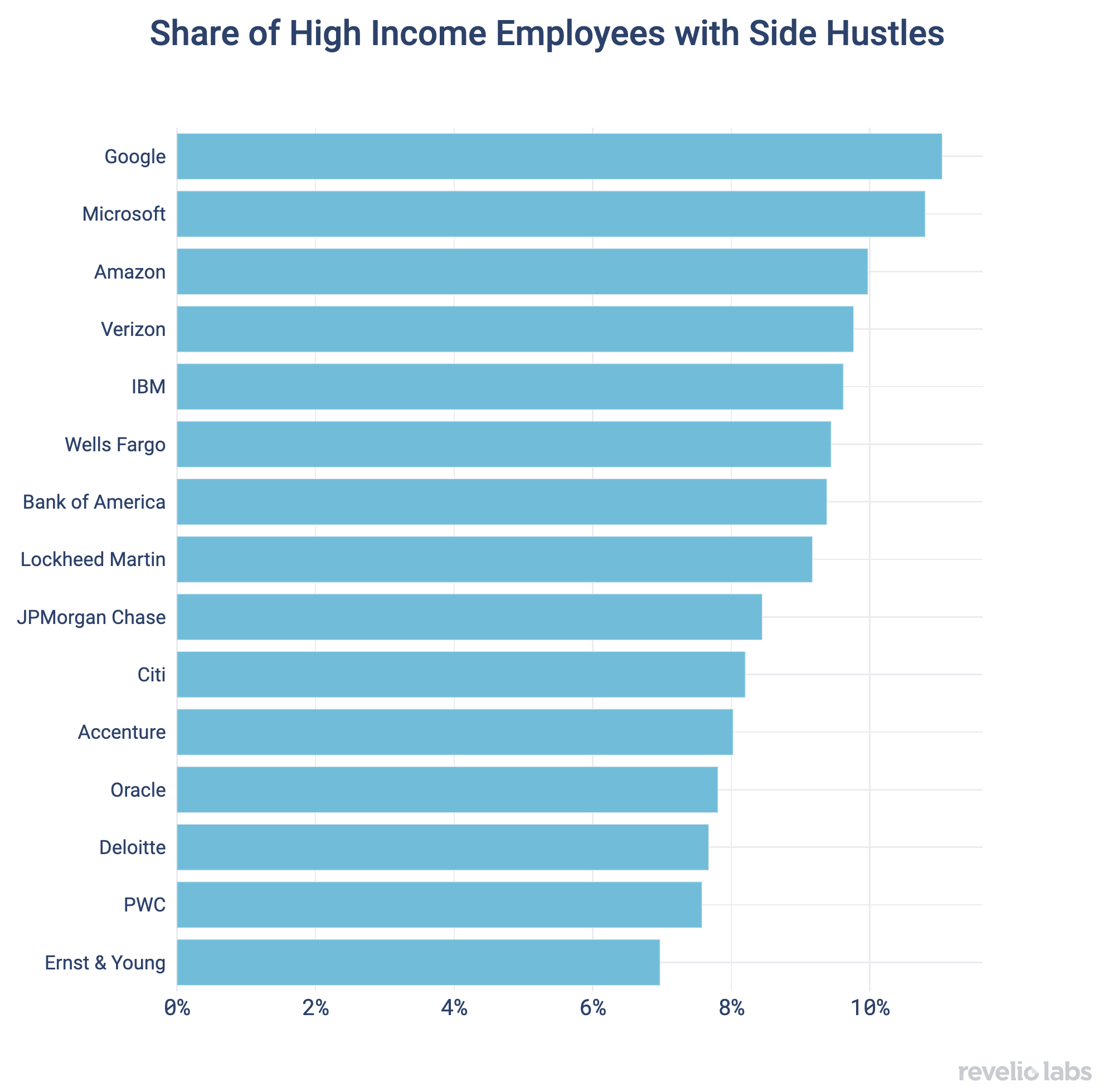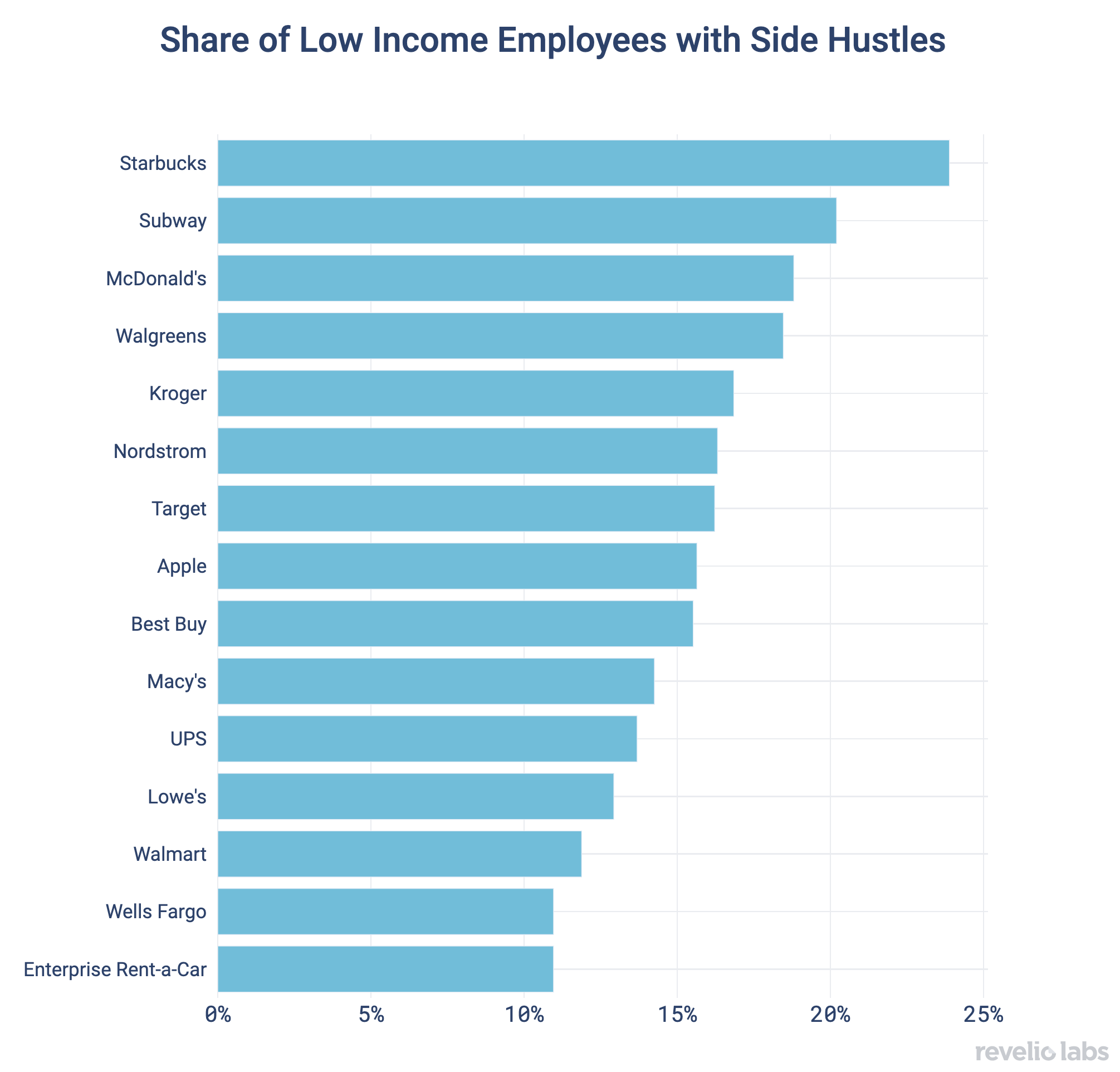Workin’ 5 to 9: The Rise and Fall of Hustle Culture
Side hustle prevalence may have already peaked

When Dolly Parton spun her classic 9-to-5 into an ode to side hustles for Super Bowl commercials, it sparked controversy as to whether hustle culture is the new norm. But is this really a 'whole new way to make a livin’? By looking at online profiles who list more than one concurrent position, Revelio Labs can track the rise and fall of hustle culture in the American economy:


Between 1990 and 2015, side hustles became increasingly prevalent, our HR data analytics show. At the peak of hustle culture, 18% of workers had a secondary job. As conversations on work-life balance and mental health became more audible, this trend took a downward turn.
Sign up for our newsletter
Our weekly data driven newsletter provides in-depth analysis of workforce trends and news, delivered straight to your inbox!
An important distinction to make in this context is between a secondary job necessary for a living wage, versus a passion project. Below are the companies with the highest shares of employees with side hustles, when their primary position earns above-median salaries:


And below are the companies with the highest shares of employees with side hustles, when their primary position earns below-median salaries.


Key Takeaways:
- The share of American workers with a side hustle has steadily increased between 1990 and 2015, Revelio Labs HR data analytics reveal. However, since 2015 we are observing the fall of hustle culture.
- Google, Microsoft, and Amazon employees have some of the highest shares of side hustles for high-paying workers.
- Starbucks, Subway, and McDonald’s employees are the ones most likely to hold another job, signaling that these companies are not giving the hours or pay their employees need.
- Dolly Parton is the Queen of Country Music.


